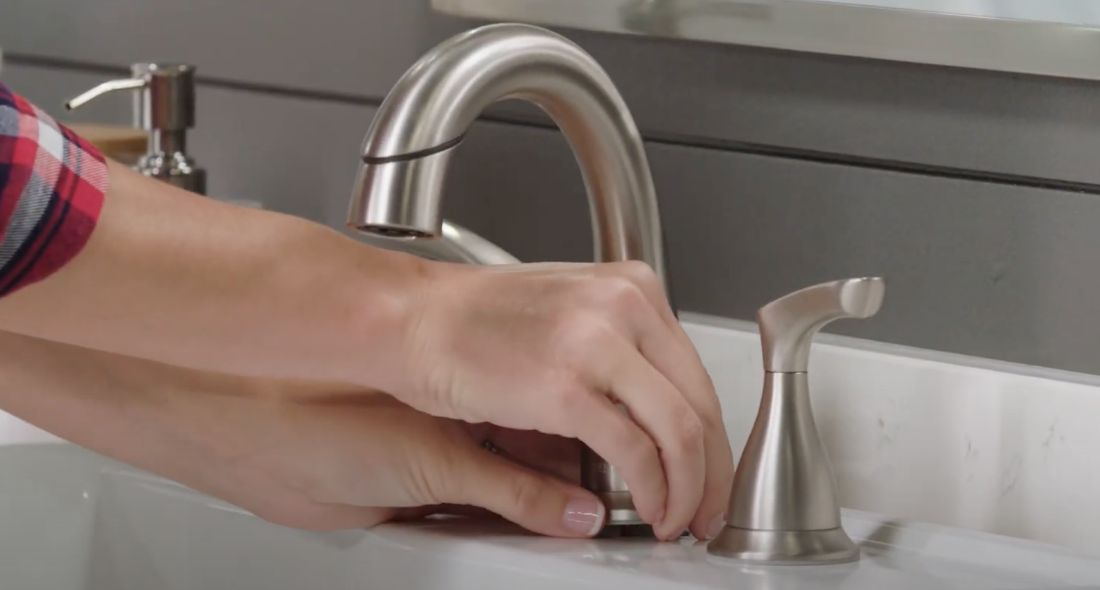Why It's Vital to Rectify a Faulty Faucet
Why It's Vital to Rectify a Faulty Faucet
Blog Article
What're your thoughts about Why Are My Faucets Dripping (And Can I Fix It Myself)??

Dripping faucets may look like a small hassle, but their influence surpasses just the aggravation of the audio. From drainage to sustaining unnecessary monetary expenses and wellness risks, neglecting a leaking tap can bring about numerous consequences. In this article, we'll delve into why it's important to resolve this usual household issue promptly and effectively.
Wastefulness of Water
Environmental Impact
Trickling taps contribute considerably to water wastage. According to the Environmental Protection Agency (EPA), a solitary tap dripping at one drip per second can throw away greater than 3,000 gallons of water annually. This not just stress water resources but also affects ecosystems and wild animals based on them.
Financial Costs
Increased Water Bills
Past the environmental influence, leaking taps can blow up water costs substantially. The built up waste in time equates into higher utility costs, which could have been prevented with timely repair services.
Prospective Property Damage
Moreover, long term dripping can lead to harm to components and surfaces surrounding the tap. Water accumulation can create discoloration, rust, and even architectural problems if left unattended, leading to extra repair service expenses.
Health and wellness Issues
Mold And Mildew and Mildew Development
The consistent presence of moisture from a dripping faucet creates a perfect atmosphere for mold and mildew and mildew development. These fungis not just jeopardize interior air high quality but also present health and wellness risks, particularly for people with breathing conditions or allergies.
Waterborne Illness
Stagnant water in dripping taps can become a breeding place for germs and other virus, enhancing the threat of waterborne illness. Contaminants such as Legionella bacteria flourish in stationary water, potentially causing serious health problems when ingested or inhaled.
DIY vs. Specialist Repair
Benefits and drawbacks of DIY Repair Work
While some might try to fix a leaking tap themselves, do it yourself repairs come with their own collection of obstacles. Without correct expertise and tools, do it yourself efforts can aggravate the issue or result in insufficient repair services, lengthening the issue.
Benefits of Hiring a Specialist Plumber
Employing a specialist plumber ensures that the underlying source of the leaking tap is resolved efficiently. Plumbings possess the experience and equipment to diagnose and repair tap issues effectively, saving time and lessening the threat of more damages.
Step-by-Step Guide to Fixing a Dripping Faucet
Devices Called for
Before attempting to deal with a dripping faucet, collect the needed devices, consisting of an adjustable wrench, screwdrivers, substitute components (such as washers or cartridges), and plumber's tape.
Typical Faucet Issues and Their Solutions
Recognize the kind of tap and the details concern causing the drip. Typical issues consist of worn-out washers, rusty valve seats, or defective O-rings. Describe maker guidelines or on the internet tutorials for detailed support on repair work.
Safety nets
Routine Upkeep Tips
To prevent leaking faucets, do regular maintenance such as cleansing aerators, examining for leakages, and replacing worn-out components immediately. Furthermore, consider installing water-saving tools or upgrading to a lot more efficient components.
Value of Prompt Fixes
Attending to leaking faucets as soon as they're discovered prevents more water wastefulness and prospective damage, inevitably conserving both water and cash over time.
Impact on Home Worth
Understanding of Well-Maintained Home
Maintaining a residential or commercial property in good condition, consisting of attending to maintenance problems like trickling faucets, enhances its viewed worth and value amongst potential purchasers or lessees.
Influence on Resale Worth
Qualities with well-maintained plumbing fixtures, consisting of faucets, command higher resale worths in the property market. Addressing leaking taps can add to a favorable impression during home assessments and arrangements.
Ecological Duty
Specific Payment to Preservation
Taking duty for dealing with trickling taps straightens with more comprehensive initiatives towards water preservation and environmental sustainability. Every individual's actions jointly make a considerable impact on preserving priceless sources.
Sustainable Living Practices
By prioritizing punctual repair services and embracing water-saving routines, individuals add to lasting living practices that benefit both present and future generations.
Conclusion
Attending to a leaking faucet exceeds simple ease; it's an important action towards conserving water, reducing financial prices, and securing health and wellness and home. Whether through DIY fixings or expert assistance, doing something about it to take care of dripping faucets is a small yet impactful method to advertise responsible stewardship of sources and contribute to a healthier, extra sustainable future.
How to Fix a Leaky Faucet: Step-by-Step Repair Guide
A leaky faucet may seem like a simple annoyance, but if it's not fixed promptly, that leak could cost hundreds to potentially thousands. From water damage to mold, mildew, and high water bills, even a tiny leak can be catastrophic if left unattended. Damage like this can even affect the overall value of your home, so it's important to take the right approach for leaky faucet repair. You may need the help of a plumber in some cases, but we've got a few tips you can try on how to fix a leaky faucet before calling the pros.
Four Faucet Types
When you're learning how to fix a leaky faucet, the first step is knowing what kind of faucet you're working with! There are four common types.
Cartridge Faucets
Cartridge faucets come in one- or two-handled varieties. In one-handled cartridge faucets, hot and cold water combines in a single cartridge. In the two-handled versions, hot and cold water are controlled separately and mixed in the faucet.
Ball Faucets
Ball faucets have a single lever you push up and down to adjust the pressure and rotate to change the temperature. A slotted metal ball controls the amount of water allowed into the spout.
Compression Washer Faucets
They're the oldest type of faucet, but they're still used in many homes — especially older ones. Compression faucets have two separate handles that, when turned, raise or lower the washer that seals a water valve. This valve stops water from flowing through the faucet when it is turned off.
Disc Faucets
Disc faucets rarely need to be repaired due to their maintenance-free design. The water flow is controlled by two discs — the upper one raises and lowers against a fixed lower disc, creating a watertight seal. If your disc faucet starts leaking, you may need to replace the seals or clean residue buildup from the inlets.
Fixing a Leaky Faucet
Step 1: Turn Off the Water
Whether you're learning how to fix a leaky bathtub faucet or how to fix a leaky kitchen faucet, always turn off the water supply to your working area when you're fixing a leak. The last thing you want is a flood added to your list of things to fix.
Look for the shutoff valves below your sink or around the tub and turn them clockwise to stop the water flow. If your faucet doesn't have shutoff valves, you may need to turn off the water for the whole house. Check to make sure it's off by turning the faucet on. If nothing comes out, you're ready to start the repair.
Step 2: Take Apart the Faucet
How you disassemble your faucet depends on the type of fixture you have. You can use a flathead screwdriver to remove the caps on top of the handle or handles for cartridge and compression faucets. Inside, you should see handle screws. Unscrew these with a screwdriver to remove the handle.
Disc- and ball-style faucets will typically have an inlet screw near the handle, and removing that will reveal the interior of the faucet.
Detach the Valve Stem
For cartridge- and compression-style faucets, you'll see the inner valve stem or cartridge once you remove the faucet handles. If you have a compression faucet, unscrew the brass valve stem. If you have a cartridge faucet, pull out the cartridge. If your cartridge has been in place for a while, it may require some tools or extra force to remove it due to mineral deposits.
Examine and Replace Parts
Once you've removed the parts, check them out to confirm what needs to be replaced. You may see corroded rubber washers, O-rings, stems, or cartridges. On a ball-style faucet, check the seats and springs for damage.
If you need to repair a leaky disc faucet, check the inlet and seals on the lower disc.
Once you determine what parts must be replaced, visit your local hardware store. Bring the damaged parts with you to ensure you can purchase the correct components to replace them.
Clean Valves and Faucet Cavity
If you've removed a stem or cartridge, you may notice mineral buildup in the faucet's threads. Use white vinegar to clean the valve seat by soaking it for a few minutes, then scrub it away with a soft toothbrush and rinse with warm water. You can also clean the interior of the faucet in the same way.
Reassemble the Faucet
Once your faucet is cleaned and the required parts have been replaced, it's time to reassemble it. Put the pieces back together and slowly turn the water supply back on. Doing this slowly is crucial because too much initial water pressure can damage the new hardware you've just installed.
https://homewarranty.firstam.com/blog/how-to-fix-leaky-faucet

I ran across that blog post about 4 Common Reasons for a Leaky Faucet while doing a lookup on the web. Do you know somebody who is curious about the subject? Why not share it. Thanks for going through it.
Report this page